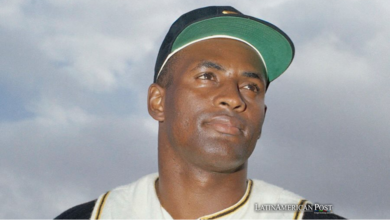Sports
-
SPORTS

U.S. Honors Puerto Rican Roberto Clemente with Commemorative Coin
Roberto Clemente's legacy shows unmatched accomplishments, kindness, and a strong dedication to fairness. A new U.S. Treasury coin remembers his…
Read More » -
SPORTS

Mexico’s Israel Vázquez: A Fighter’s Legacy of Grit and Greatness
The boxing world mourns the loss of Israel "El Magnífico" Vázquez. Vázquez was a former world champion. Many remember him…
Read More » -
SPORTS

Corruption and the Decline of Colombia’s Olympic Dreams
Latin American sports inspire pride, but scandals also often occur in this region. Colombia's Olympic performance has sharply dropped since…
Read More » -
BUSINESS AND FINANCE

Argentina’s Soccer Controversy: Business Over Sport at Deportivo Riestra
Argentina's Deportivo Riestra stirred outrage by fielding YouTube star Ivan "Spreen" Buhajeruk as a striker in a top-league match against…
Read More » -
SPORTS

Brazil’s MMA Legacy: A Global Force in Combat Sports
Brazilian fighters have long been the backbone of mixed martial arts, bringing an unmatched skill set, toughness, and influence. From…
Read More » -
ANALYSIS

Brazilian Flamengo Goalkeeper’s Dark Descent into Kidnapping and Murder
Once a rising star in Brazilian soccer, Bruno Fernandes de Souza's career and life took a shocking turn in 2010…
Read More » -
SPORTS

A Legendary Tribute to Ayrton Senna at Next Brazilian GP
This year’s Brazilian Grand Prix will honor the iconic Ayrton Senna, celebrating 30 years of his enduring legacy. Fans, drivers,…
Read More » -
SPORTS

Colombia’s Ana Guzmán Nominated for 2024 Golden Girl Award
Colombian defender Ana Guzmán, a rising star at Bayern Munich, has been named one of the ten finalists for the…
Read More »










